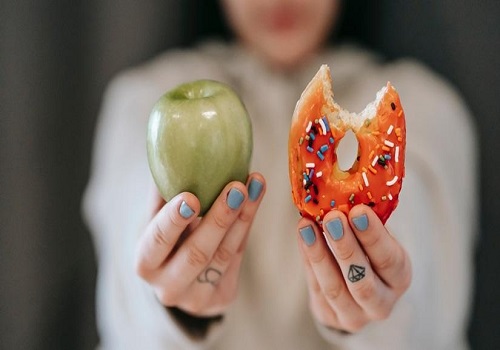The 80/20 Rule for your 2023 weight loss resolution

Follow us Now on Telegram ! Get daily 10 - 12 important updates on Business, Finance and Investment. Join our Telegram Channel
Dieting strategies like "you can't eat carbs" or "eat less" are common in most diet plans. It has been indoctrinated in us that in order to achieve results, you must strictly adhere to the guidelines, leaving no room for your favourite foods.
According to Dr. Archana Batra, a Dietician, and a Certified Diabetes Educator, such a method typically fails because it does not result in a sustainable and balanced lifestyle. Moreover, it results in a "yo-yo" effect in which you diet stricter and then cheats harder on your diet.
"Finding a diet that matches your requirements and lifestyle is wholesome. The 80/20 Rule has to be the greatest diet plan for meeting all of your requirements. Also, this diet will prevent you from putting on weight while making you feel satisfied after every meal. This will help keep you fuller for longer periods, reducing cravings. This method emphasizes both, the nutrients that a healthy body needs and the tiny delights that will satisfy your mood cravings. So, rather than reducing the number of meals and completely eliminating carbs, the 80/20 rule focuses on dividing other nutrients and carbs evenly throughout the day. It is often difficult to begin a diet plan, thus the goal is to keep your mind satisfied. Then, gradually reduce your intake of high-calorie foods daily," said Dr. Archana Batra.
How to follow the 80/20 Diet Plan?
The diet consists of 80 per cent nutrient-dense food, such as protein, fibre, vitamins, and carbohydrates, and 20 per cent treats, such as a pack of chips, fries, or whatever you like. If you believe that 20 per cent is an insufficient area for snacks, increase it to 25 per cent. However, exceeding that percentage of high-calorie foods is deemed excessive.
Step-by-Step Guide:
To begin, always choose a high-protein meal for breakfast to energise your attitude and body.
Second, for lunch, opt for the home-cooked fare. White/brown rice/roti, protein side dish, pulses/lentils (dal), curry/fries.
Third, if you eat a large meal, try reducing your carbs for the ones that come after. If you consume a grilled cheese sandwich for breakfast, simplify your lunch by reducing the amount of rice/roti and increasing the number of veggies and side meats like chicken, fish, or paneer. Tip: Depending on the day's food selection, this guideline should be followed.
Fourth, take a 30-minute break after lunch to consume cucumber/raita/yogurt or whatever else will help your digestion. Tip: If you're having an extremely low-carb lunch, skip this section.
Fifth, plan your meals on a weekly basis. If you have a Saturday outing planned, pick low-carb items on Friday and Monday. This method allows you to control your calorie intake.
Dr. Archana Batra further shares cheat meals for those two cheat days every week. For example:
Breakfast: Oats
Morning snack: any fruit
Lunch: Veg/Nonveg Biryani
Evening Snack: Burger/Pizza
Dinner: A big bowl of Lentil curry only (without roti/rice)
Do not eat your cheat meal for breakfast.
Avoid overeating on cheat days
Try restricting your cheat meals after 8 p.m.
Stay hydrated throughout the day
Include a detox drink and a 30-minute workout in your routine.
The best balanced home-cooked meal along with few spaces for treats is your key to losing weight or staying fit. Thus, instead of starving yourself with fad diets this year, enjoy your favourite meals even when on a diet.












 320-x-100_uti_gold.jpg" alt="Advertisement">
320-x-100_uti_gold.jpg" alt="Advertisement">












